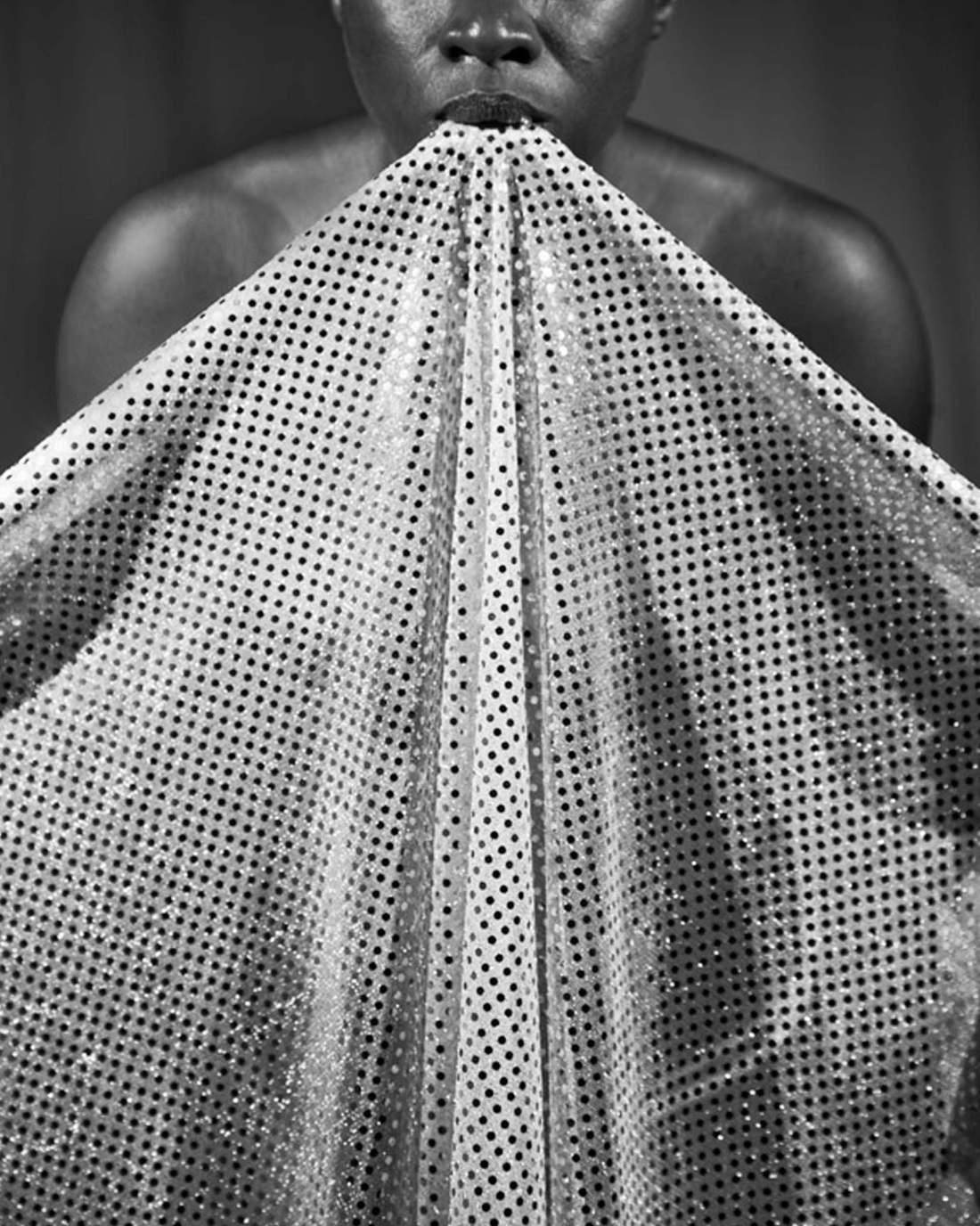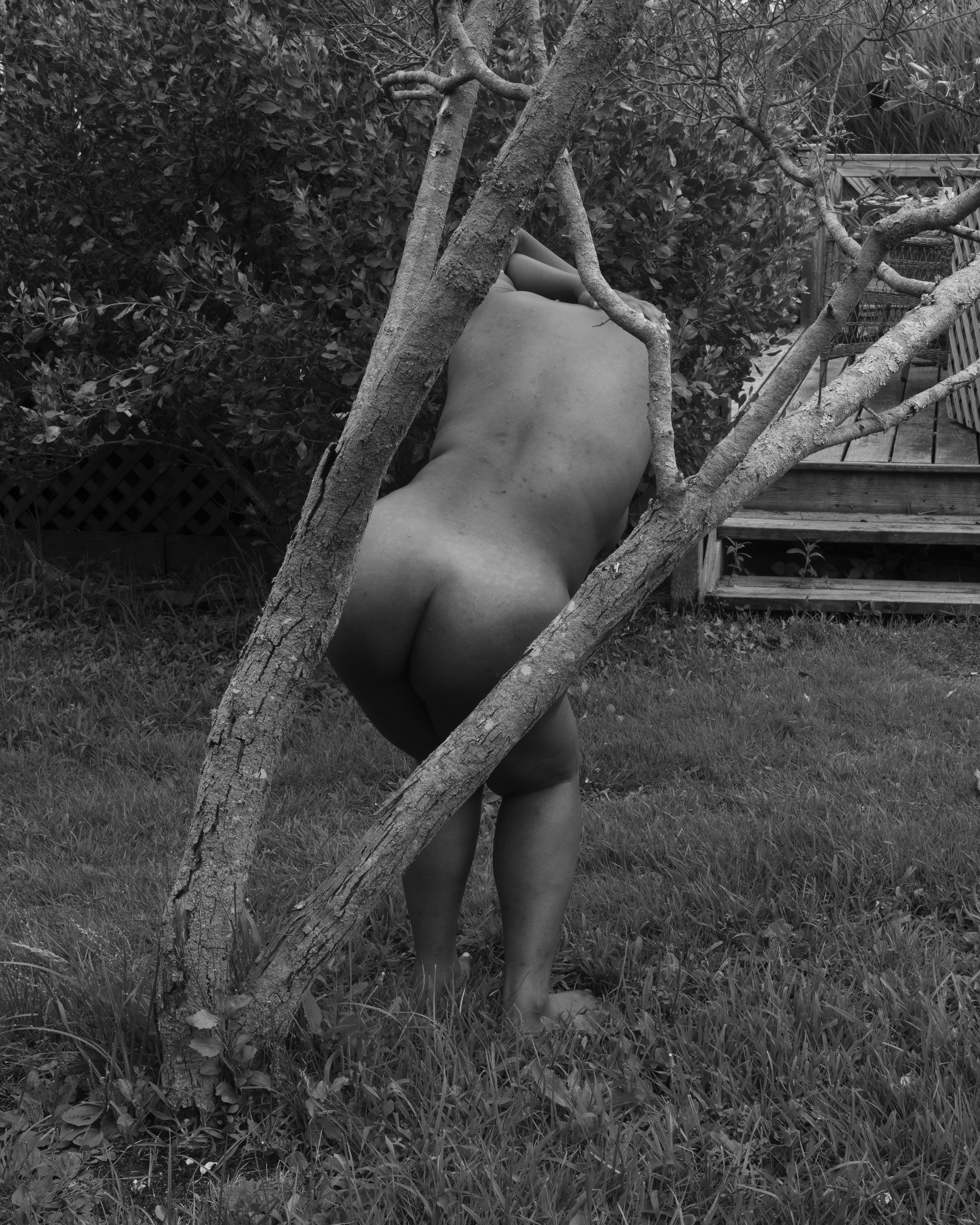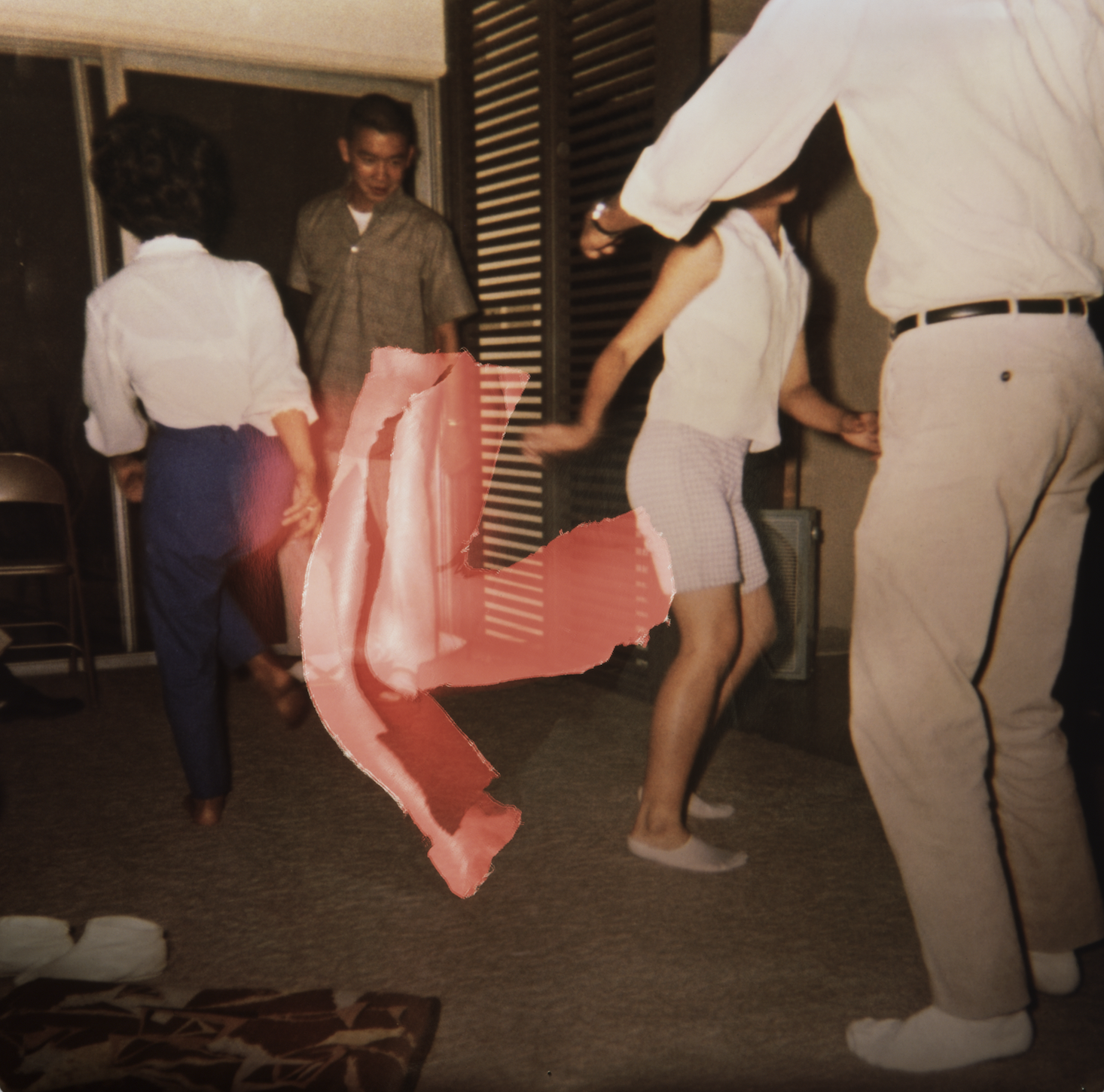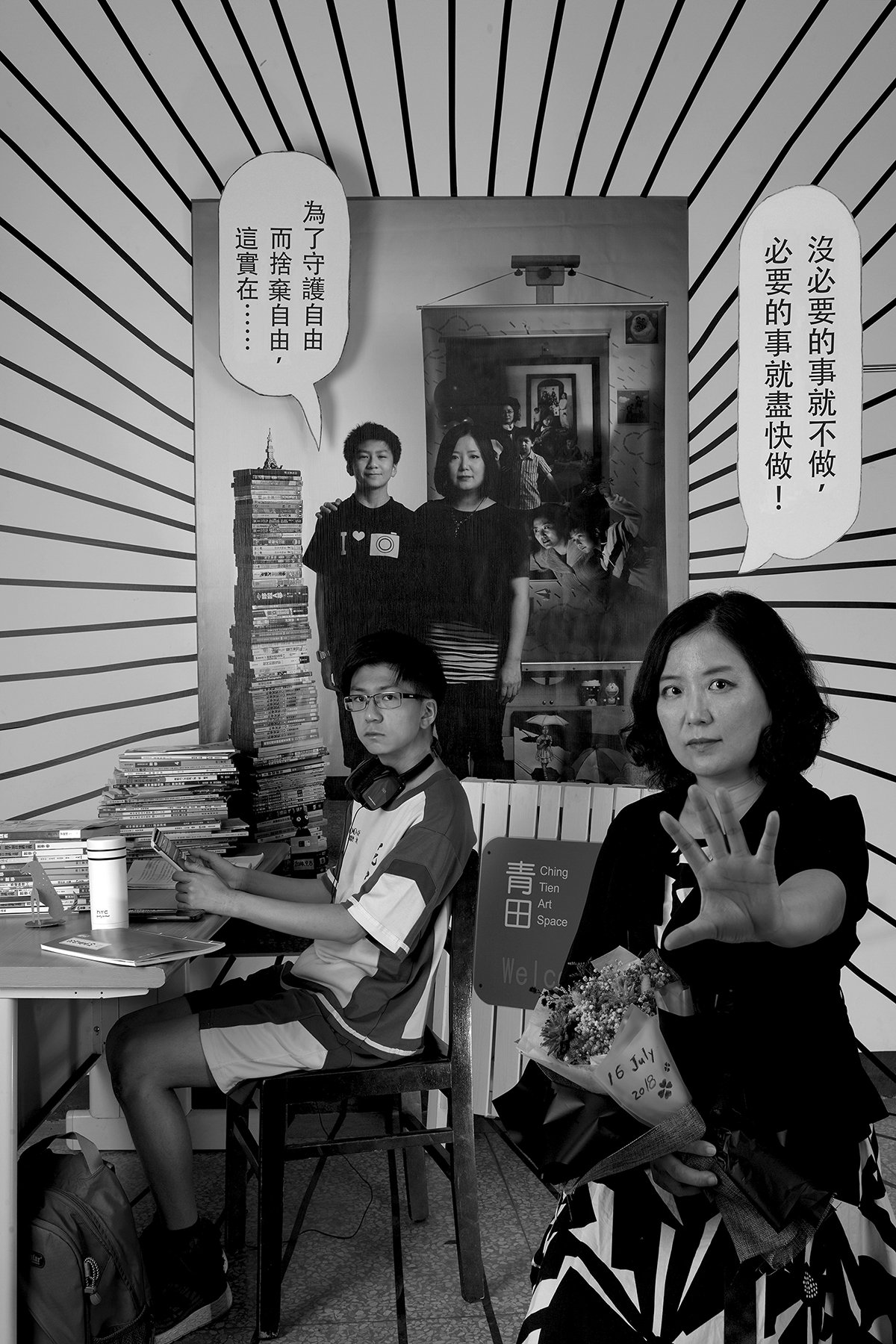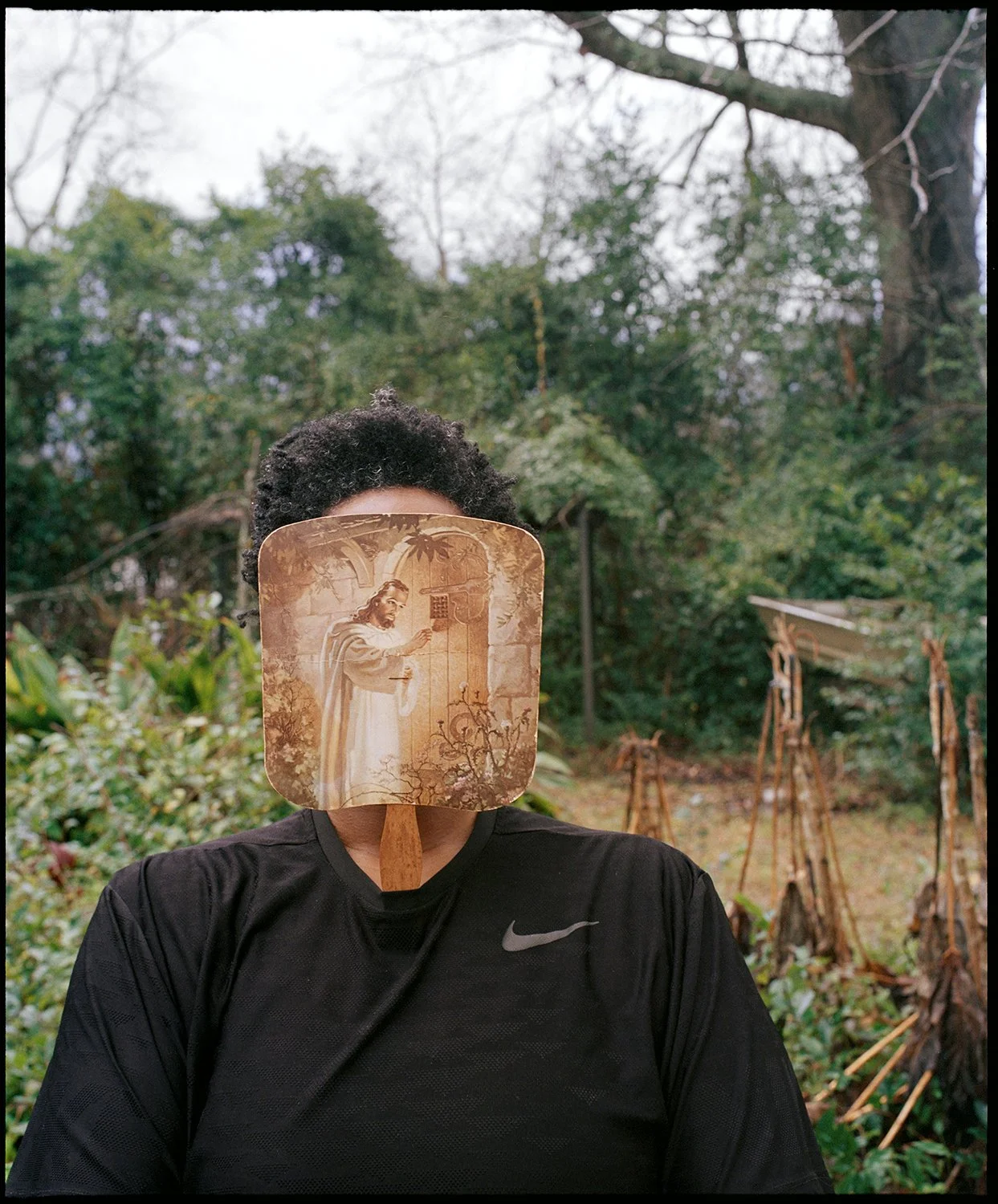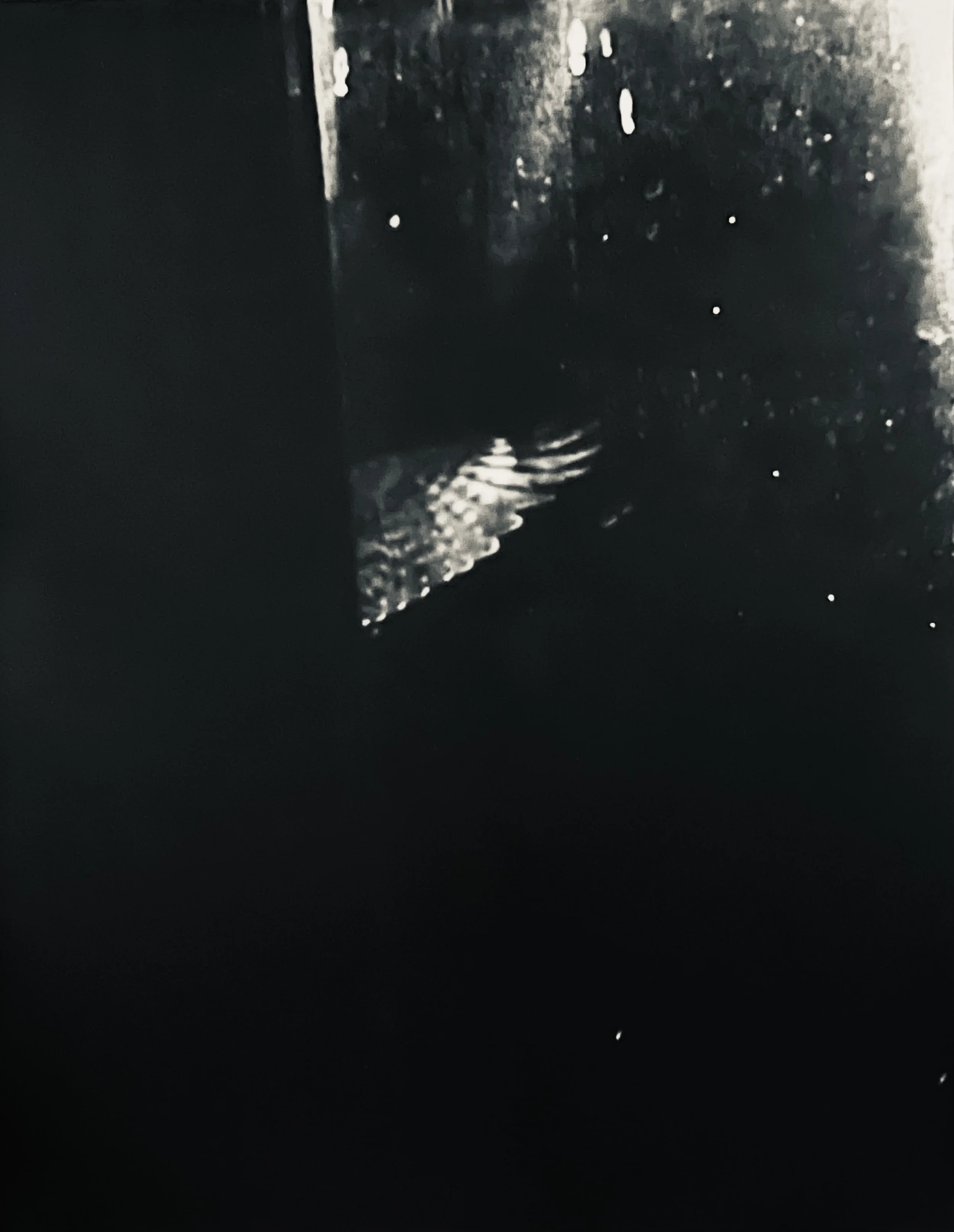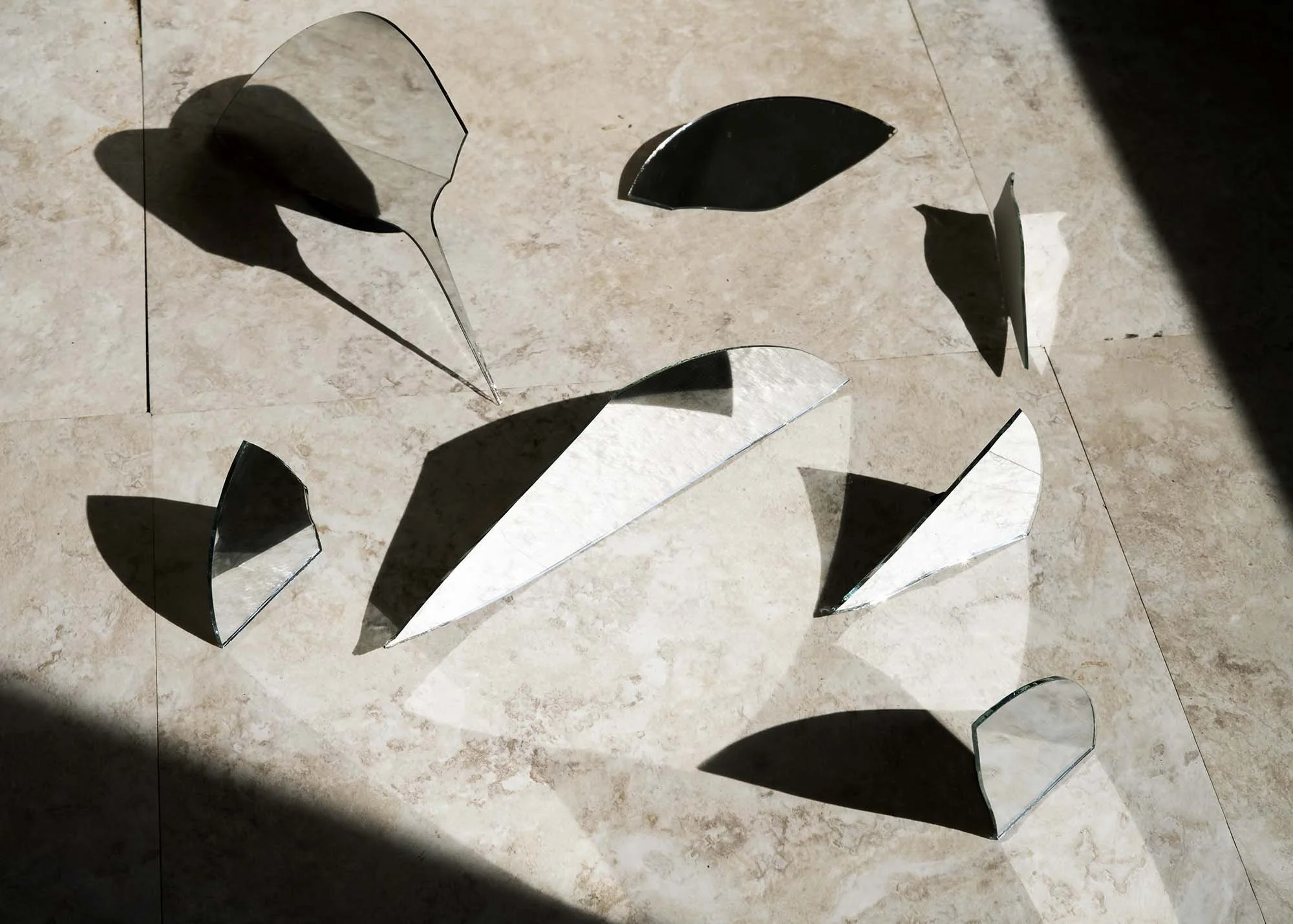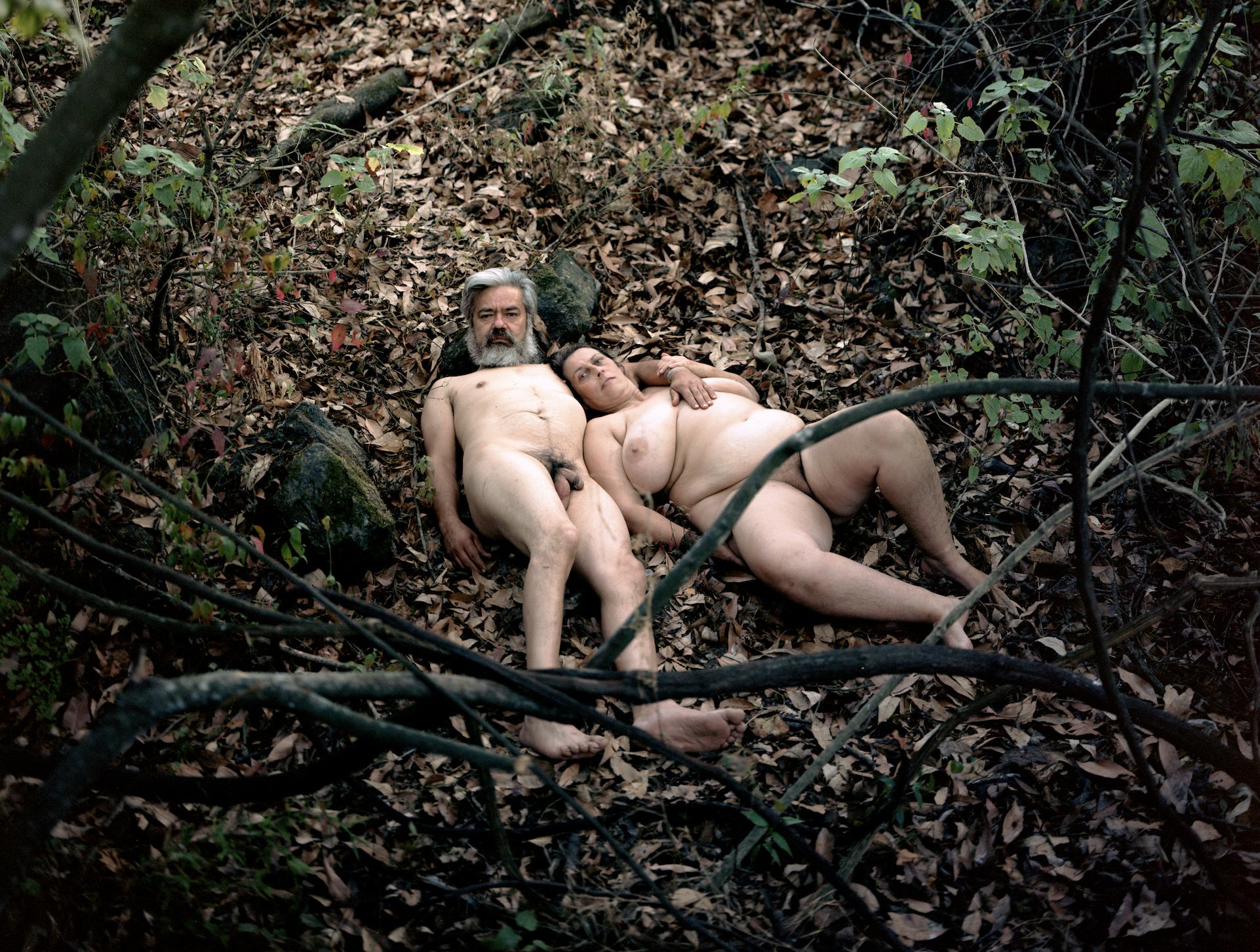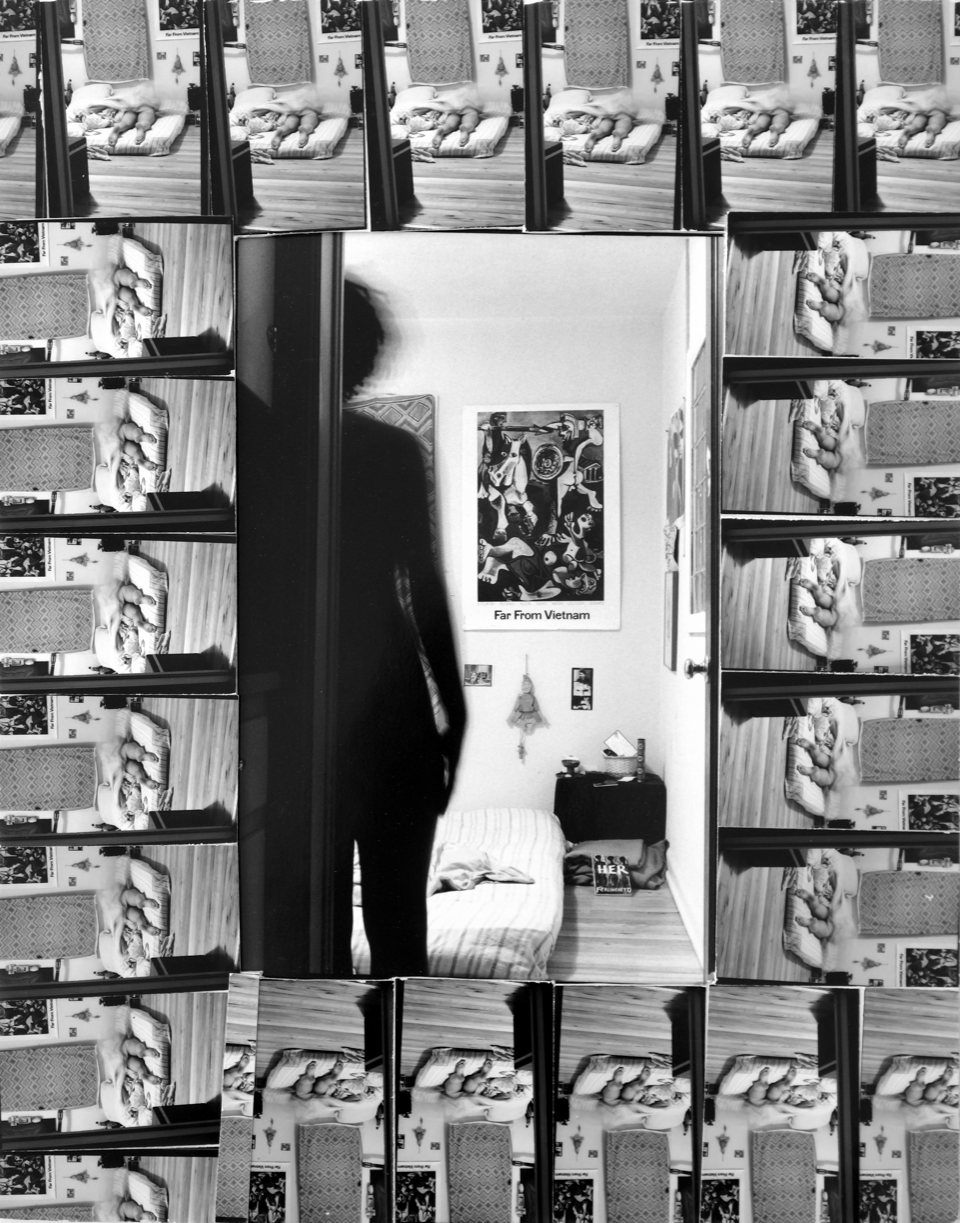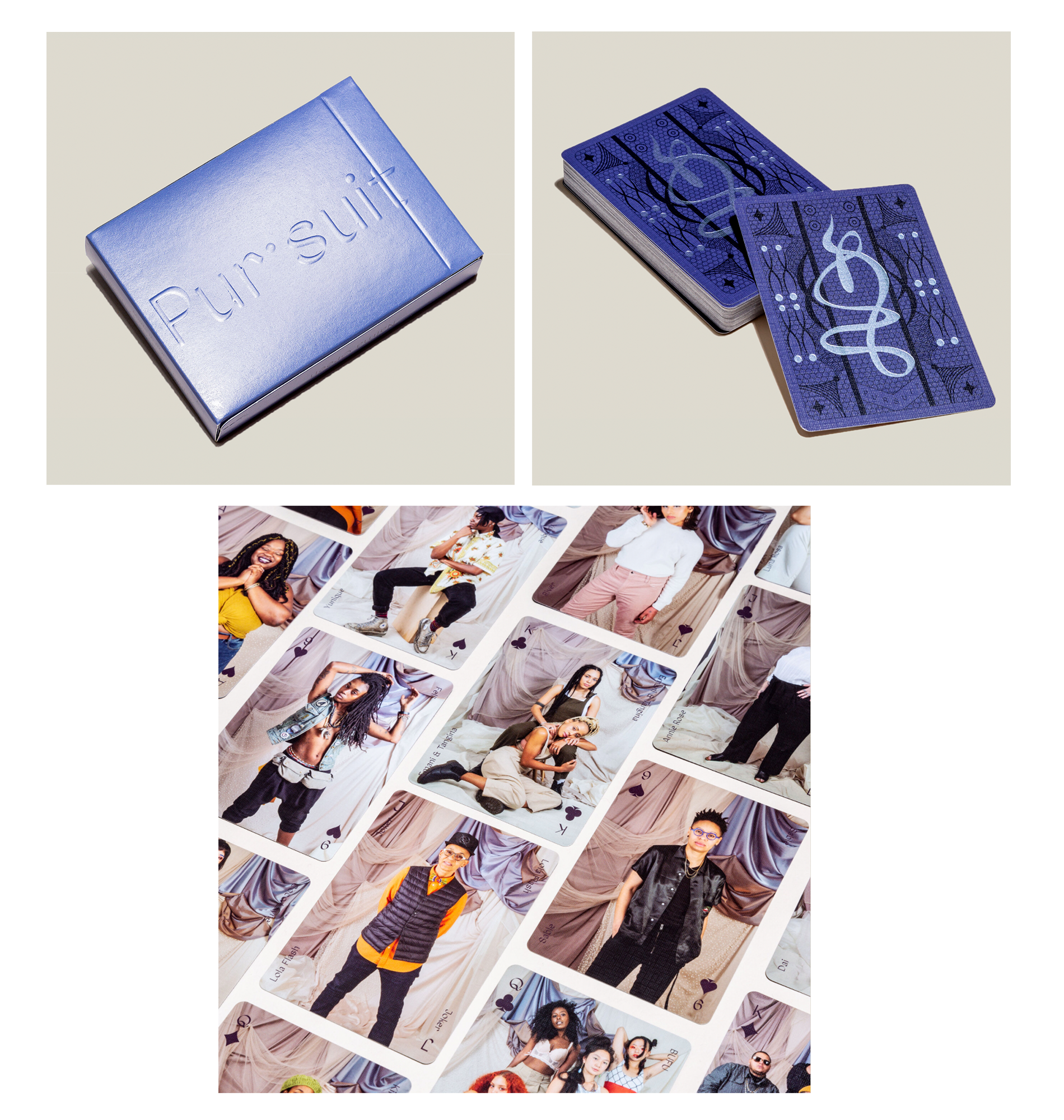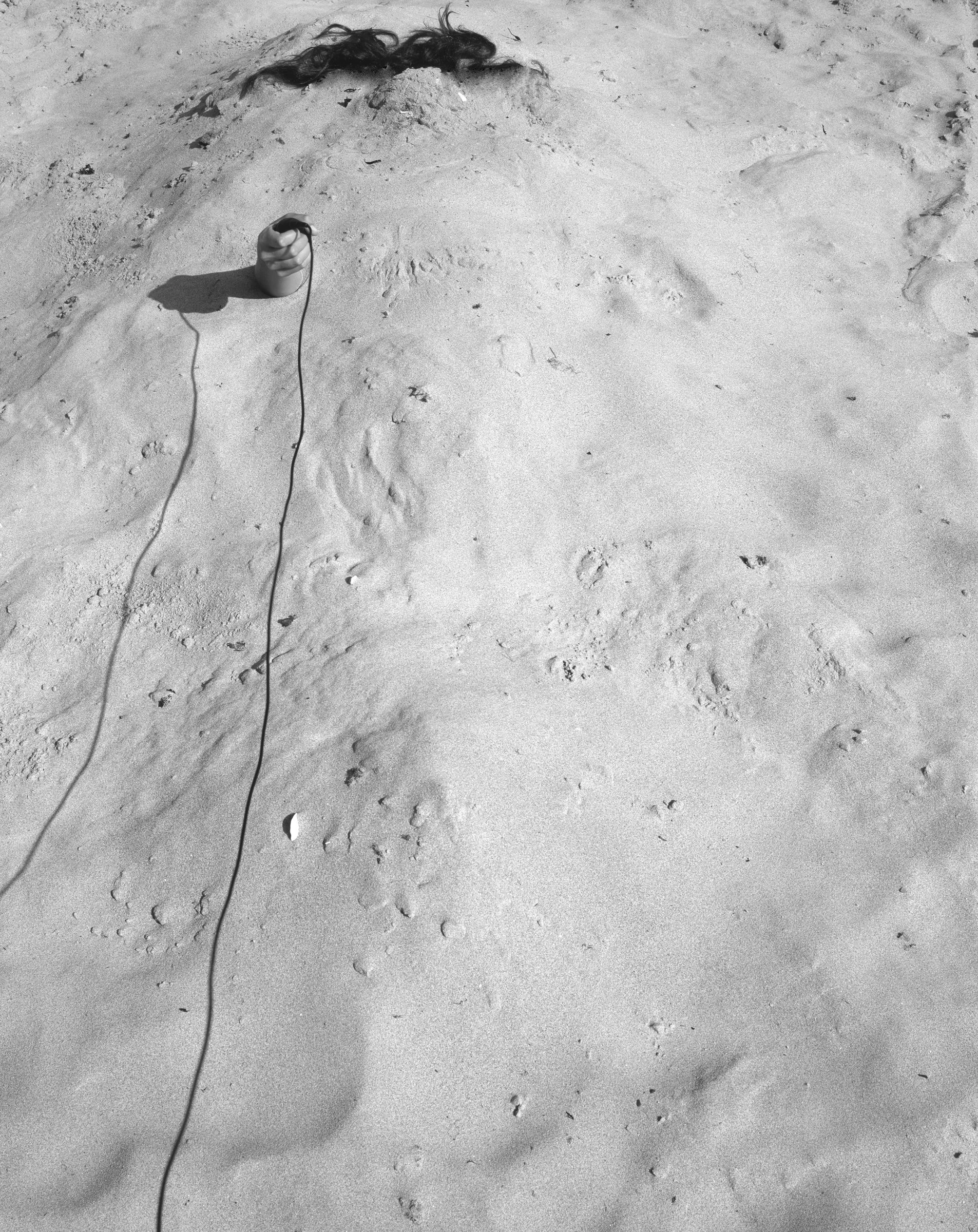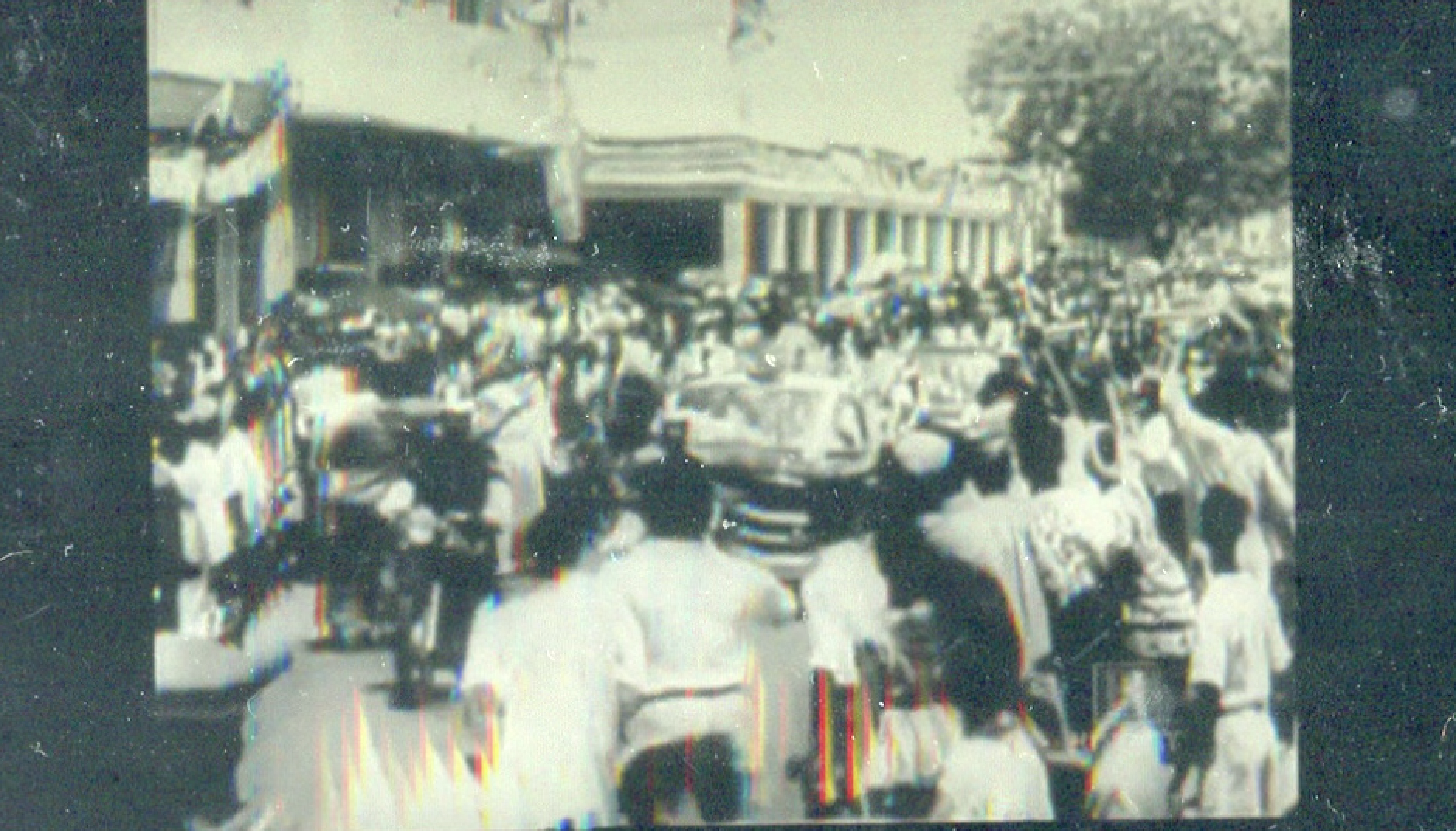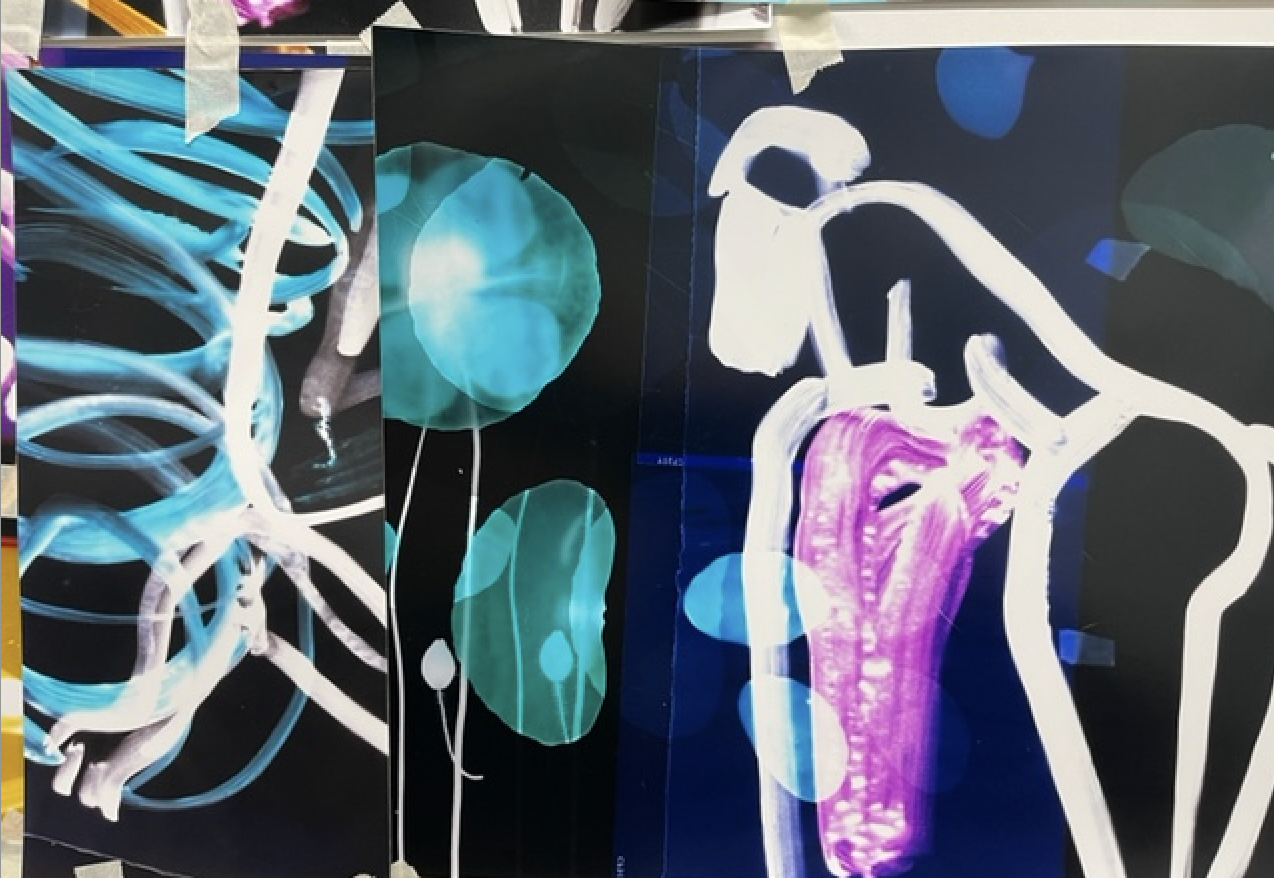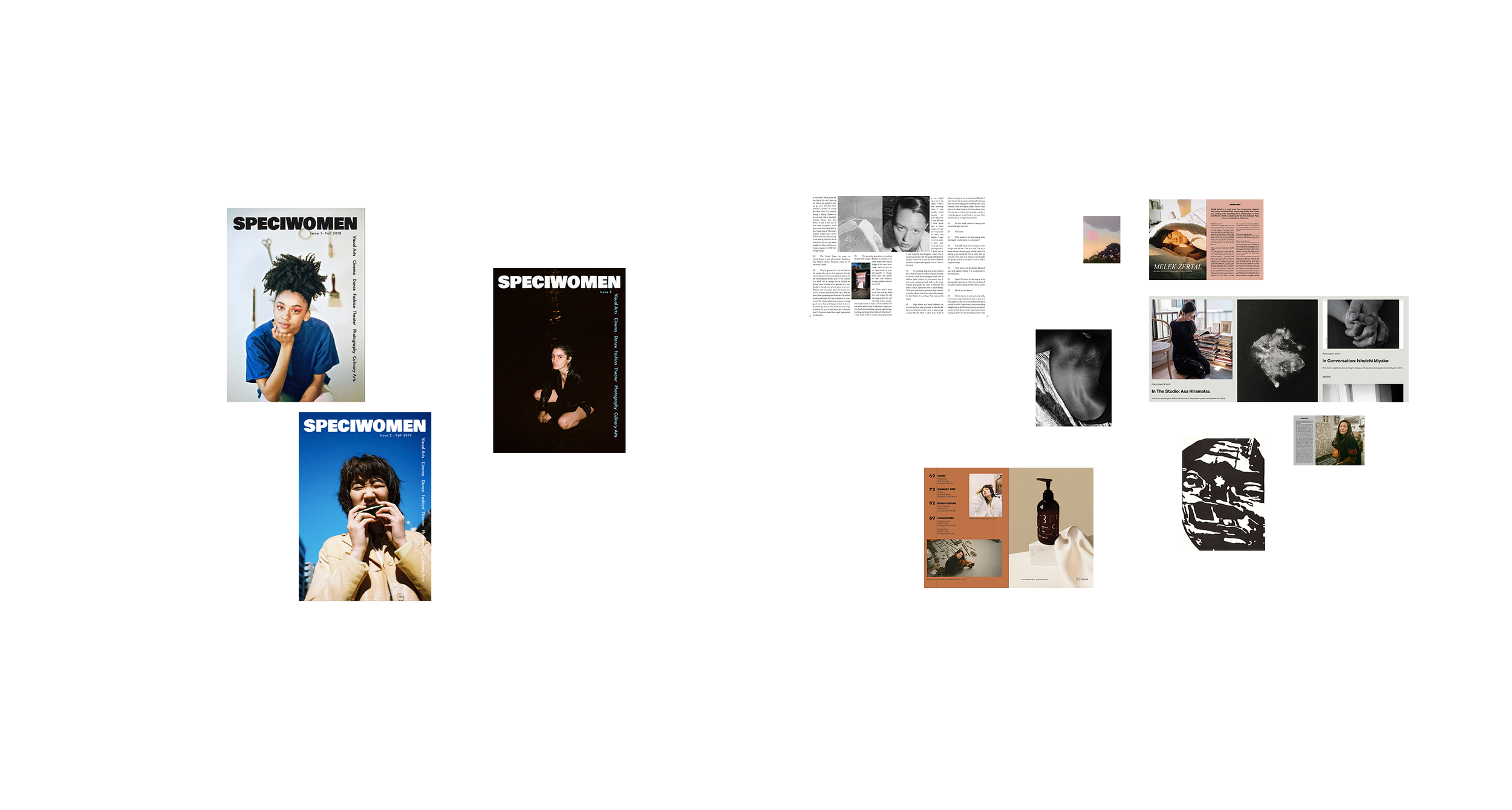April 1-9, 2022
Print Sale Benefit: I Belong To This
For one week only, purchase prints from the artists comprising the next issue of Speciwomen. Our fourth issue will be a catalogue of the exhibition I belong to this, curated by Justine Kurland at Huxley-Parlour in London.
“I belong to this brings seventeen artists together around themes of self and family, private rites and communal ritual, along a continuum of becoming. The title of the show is from Ariana Reines’s poem “Save the World”, and can be read as a declaration of identification, a promise of solidarity, or a blurring of self into multitudes. These artists mark an intractable this. The camera points, more like an ear than an index finger, in the direction of what is felt rather than seen and to those invisible threads that hold us together.”
— Justine Kurland
Genesis Báez — Jennifer Calivas — Naima Green — AK Jenkins — Sydney Mieko King — Keli Safia Maksud — Jacky Marshall — Qiana Mestrich — Shala Miller — Cheryl Mukherji — Diana Palermo — Calafia Sanchez Touzé — Keisha Scarville — Wendy Small — Gwen Smith — Anne Vetter — Annie Hsiao-Ching Wang
This sale was brought together to raise funds for the printing and production costs of this catalogue, alongside bringing direct support to our featured artists. The proceeds from this sale will be equally split between funding for the fourth issue in print, and the artists.
Keisha Scarville — Untitled (Surrogate Skin), 2016
Pigment print, 8 x 10 inches
‘The image is part of “Mama’s Clothes," an exploration of the materiality of absence. I am interested in photography’s role – both as a memorial and evidence – in the preservation and representation of the body in death. Drawing aesthetic inspiration from various sources that include spirit photography and the figure of the Egungun, I use my late mother’s clothes and fabrics to visually reconstitute her presence within the pictorial space. The clothing is transformed into residual surrogate skin and becomes an abstraction of the body. In the series, I create a visual space where I can conjure her presence while using my body as a medium.
In this particular image, I was inspired by spirit photography from the Victorian era, particularly the role of the medium as a figure who is able to cross the threshold of life into death. Many mediums would spew material from their bodies, which was referred to as ectoplasm.’
– Keisha Scarville
Cheryl Mukherji – I Held My Mother, 2020
Pigment print, 8 x 10 inches
‘The work I Held My Mother, 2020 is from the project Ghorer Bairer Aalo, which is an exploration of my origin and inheritance embedded in the figure of my mother. Using mediums such as photography, text, printmaking, and embroidery, I examine and engage with my mother’s presence and personal history throughout the family albums that I brought with me to the United States from India. In the family photographs, I find a resemblance between my looks and my mother’s. This physical resemblance feels synonymous with fate: if I already looked like her, then I must become her. I explore the idea of becoming my mother informed and guided by memory, familial and intergenerational trauma, mental illness, migration, and domestic labor—not washing dishes and cleaning, but the work it takes to stay related to someone, even my mother.’
– Cheryl Mukherji
Diana Palermo – a stand in for a body
Pigment print, 10 x 8 inches
‘The image in this print represents the ending of a hex. This lemon represents a stand in for a body that is now healed. The print was created as a photogram combined with a contact print in the darkroom. It comes from a series of unique originals where the light used to create the print was recorded slightly differently for each. The ritual of the lemon and the darkroom are bridged.’
– Diana Palermo
Shala Miller – Me or the Tree, 2020
Pigment print, 8 x 10 inches
Shala Miller uses photography as a way to look inward to then better understand the world around her. In her work she explores the feelings of pleasure and pain, and takes note when the two interconnect, often looking to history, on both a personal and global level, to unpack this entanglement.
Sydney Mieko King – Redcliff St., 2020
Pigment print, 8 x 10 inches
‘In Redcliff St., I collapse the reflection of a plaster mold of my body onto an archival family photograph. The archival image takes place in my mother’s childhood home. Family and friends dance what looks to be “the twist” on a carpeted floor. I was drawn to the movement in this photograph and the way that the camera flash imposes these dancing limbs onto each other – how the shirt-sleeved arm in the foreground casts a shadow onto a dancer in the background. The photograph and the flash collapse the depth of the room, forging an immediate overlapping relationship between the dancers. The process of making this photograph allows me to construct similar overlaps across time and distance. Working with reflections and spatial layering allows my indexical trace – a plaster mold, a "shadow" of sorts – to touch the shadows of those who are no longer with me.’
– Sydney Mieko King
Annie Hsiao-Ching Wang – The Mother as a Creator No.10:
Arguing for freedom, 2018
Pigment print, 6 x 9 inches
‘Like an artist, the Mother is wise in her creation. The Mother not only creates a life, but also a continuous matrix of experiences between Mother and Child. Motherhood is a long-term process full of a myriad of complex feelings. This complexity cannot be expressed solely by saccharine images of Mother and Child, nor by the image of the Mother Incarnate willingly sacrificing herself for the sake of her children. All of these stereotypes of Motherhood are for me a tedious, unavoidable harangue which offers me no consolation. It is from this I derive the original motivation for this series.
Since getting pregnant in 2000, I had been burdened with pregnancy pains and the fear of losing my sense of self, and so I attempted to use art creation to preserve my sense of self during motherhood. It gives me confident that “The Mother as a Creator” series, which has been developing for twenty years, not only proves that the Mother can maintain her sense of self, but also that creativity can overturn many of the myths associated with Motherhood.’
– Annie Hsiao-Ching Wang
AK Jenkins – Untitled, From Grandma’s Fan series, 2021
Pigment print, 8 x 10 inches
‘In Southern Churches the weight of witnessing sin moved out of a body is
inescapable. I’ve laid eyes on it in performative forms; most knowingly as the
exuberant shout, the flip of the preacher's handkerchief, and the synchronized
rhythm of church fans waving in rows of wooden pews. With precision, each ritual ceremoniously and instinctively cultivates the binary’s stronghold on the house of the Lord: everything spliced into good and bad, holy and evil. Much like the brush bordering my grandmother's lawn – the setting of multiple images in Grandma’s Fans – sin is thick and tanged. Drawing its title from Bill Withers soul-folk classic Grandma’s Hands, I embrace visual nuance in repetition to unfold faith as a site of blurred lines between saints and sinners. As I sit behind the mask of my maternal grandmother’s Church fans, the onlooker is confronted with a mirror of symbols that substantiate our social conformity – the white male father figure, the prescription inside institutional architecture, the language of the faithful and the ideology of politics.
As sitter and self, I resist remaining in this position. Grandma’s Fans is rapt in moments of contemplation and refusal. It is a migration towards a heavenly haven, where family legacies become our power, not the reprehension of purpose or pleasure, and we emerge in the light and foreground of our own making.’
– AK Jenkins
Qiana Mestrich – Hoja Seca (after Flor Garduño), From THRALL series, 2017-2020
Pigment print, 8 x 10 inches
‘With THRALL I endorse the Black Mother’s role as Creator, Author and Photographer. She is no longer hidden as a prop or depicted as forced labor. She is superhuman and in control of the image, utilizing the home and immediate environment as her studio. Collaborating with my children, in THRALL I picture them dancing, being wondrous and curious in Nature.
As a female artist of color continually in search of my place within the history of photography, I choose to be in conversation with other, non-white, women photographers who capture life's spiritual aspects.
This image, for example, is in homage to Flor Garduño's 1998 black and white photograph, "Hoja Elegante, Mexico". Garduño's image, like mine, upholds Nature as a protective force within an artificial, studio environment -- thus denying the viewer access to the bodies pictured.’
– Qiana Mestrich
Justine Kurland – Armadillo Burial, From Girls Pictures series, 2001
Pigment print, 10 x 8 inches
‘Girl Pictures, photographed between 1997-2002, imagines an army of runaway girls wandering across the American landscape. Through staged narratives the invisible communion between girls becomes visible, foregrounding their experience as primary and irrefutable. It is a world in which acts of solidarity between girls would engender even more girls—they multiply through the sheer force of togetherness. Their collective awakening ignites and spreads through suburbs and schoolyards, calling to clusters of girls on stoops and the hoods of cars, or aimlessly wandering the neighborhoods where they live. They build forts in the forest and live together in youthful bliss, revealing in their interdependence on each other and the land.’
– Justine Kurland
Wendy Small – Creatures at Dawn
Pigment print, 8 x 10 inches
‘I started taking the Creatures of the Dawn photographs in January 2021, from my kitchen table, on my cell phone, through the window. My kitchen window became an Amphitheatre. I sat and watched and took hundreds of pictures of birds. I thought differently about them every few days. At first It was about setting up the food and feeder. Then it was about the company of seeing them each morning. Then our shared morning ritual. Then it became about the light, then the birds flying through the light. Then, how the smallest piece of a wing could signal the entire sky.’
– Wendy Small
Genesis Báez – Archipelago, 2019
Pigment print, 10 x 8 inches
In Archipelago, various mirror shards appear to emerge from the ground. The mirrors reflect various perspectives and each other, blurring the edges between where one begins and another ends. Mirrors are a theme in Baez’s work; they fragment and multiply space, a fragmentation akin to the effects of diaspora and of belonging to multiple places. Archipelago is part of the body of work A Bridge of Mirrors.
Calafia Sanchez Touzé – Garden Cuts, 2020
Pigment print, 10 x 8 inches
‘My parents lay on a bed of leaves in the land that they bought 20 years ago. It took just about that long to build our house. Saving just enough money every year to build it piece by piece. The section in which they are being photographed has largely remained untouched.
My father's head looks disjointed from the rest of him, he looks decapitated. The sort of posture subjects in early daguerreotypes held with their heads immobilized by chairs. The vines cut my mother's legs off, taking her crotch with them. My father loses his feet to them. My mother holds on to my dad and my dad to her. They live on the fringe, on the edge of desperation, approaching hope, between life and death.
This photograph is part of a larger project where I photographed my family in my father's home state of Michoacán, using religious iconography, Mexican myths and Mexican pulp journalism to talk about the ways postcolonial violence has been mediated by Christianity and the effect of this philosophy on my family.’
– Calafia Sanchez Touzé
Gwen Smith – Portal to the new wave using Far from Vietnam and Ferlengetti’s Her as a reference, Boulder, Colorado,1988-1989
Pigment print, 10 x 8 inches
‘My family album is the origin point of my studio practice. In it, I trace the roots of who I am, searching for my place in both my own family and the Black diaspora at large. For the past 3 decades, I have been making albums; I accumulate photographs and use them to chronicle life's meaning. The three pieces in this exhibition all stem from one such project, Island: Jamaica vs. Martha’s Vineyard, a search for indigenous pathways and family history. This series utilizes the friction between photography and painting as a device to reexamine my life and archives, like an exquisite corpse of family memories. The family that I have collected, however, is more than biological: From Sister Sledge to Stagecoach Mary, my genealogy has grown to encompass the scores of Black Women whose contributions to the world have shaped my own. I made the first of these collages as a college student in the late 80s; in so many ways, they act as portals, literal windows into the past as well as a framework through which I understand my present. By forcing these images to collide—melding disparate times and spaces—I begin to reconcile my own alienation, both from my biological family and through the distance of diaspora.’
– Gwen Smith
Anne Vetter – Hands, 2020
Pigment print, 8 x 10 inches
‘This photo is from my project Love is not the last Room, a project exploring home, family, queerness, gender and Jewishness. In many ways, the project sits alongside the Avinu Malkeinu videos from the I belong to this show- the photos and videos often times occupy the same rooms, I move my body through both. The hands in this photo are an echo of my hands as I pray, moving the feeling through fingers.’
– Anne Vetter
Naima Green – Pur·suit, 2019
Deck of playing cards with 54 photographs in an embossed box
3.5 x 2.5 in (8.9 x 6.4 cm)
Edition of 50 available as part of the sale.
"Pur·suit" is a deck of 54 playing cards featuring photographs of queer womxn, trans, non-binary, and gender-nonconforming people. Inspired by Catherine Opie's "Dyke Deck," Green brings a new perspective and vision to an iconic foundational project. Use these cards for games, as guides, for divination, or whatever else you dream up.
Jennifer Calivas – Self-Portrait While Buried #2, 2019
Pigment print, 8 x 10 inches
Self-Portrait While Buried #2 is part of a group of twelve photographs in which the artist takes a photograph of themselves while buried in sand and mud of tidal zones. The cord in hand is used to take the photograph. Calivas thinks of this process as similar to the Surrealist method of Automatic Drawing, using her body and the earth like a pencil and paper. Unable to see at the time the photograph is made, it isn't until the film is developed that Calivas discovers what form has taken shape.
Keli Safia Maksud – Faces of Africa, 2018
Pigment print, 10 x 8 inches
‘Faces of Africa points to the ways in which electronic technologies affect the construction of identity and questions the material from which history is pictured and remembered. The images in this series are created by playing YouTube versions of Faces of Africa, a documentary series that highlights important figures and definitive moments in African histories, on an iPhone and placing it on a flatbed scanner which captures re-mediated historical moments in still image, resulting in artefacts of the technology revealing itself - prismatic distortions slurring movements and the passages of time in unpredictable ways. These documentaries mainly focus on the project of independence and unification, pointing to a moment of hope when the continent was undergoing rapid change in identity. The resulting scanned still images however, are distorted, fragmented and at times, illegible just as those moments in history have become.’
– Keli Safia Maksud
Jacky Marshall, Alex Ass Up, 2021
Pigment print, 10 x 8 inches
‘These pieces start with live drawing sessions on Zoom. She takes her drawings into a color darkroom, turning them into photograms. Test strips are collaged into new compositions. Jacky’s work is psychological at root but mediates desire and trauma through associations to color, gesture, and form. The process allows Jacky to navigate her way through childhood nightmares, to find her way to peace and beauty simultaneously blurring boundaries between painting and photography.’
– Justine Kurland on Jacky Marshall

